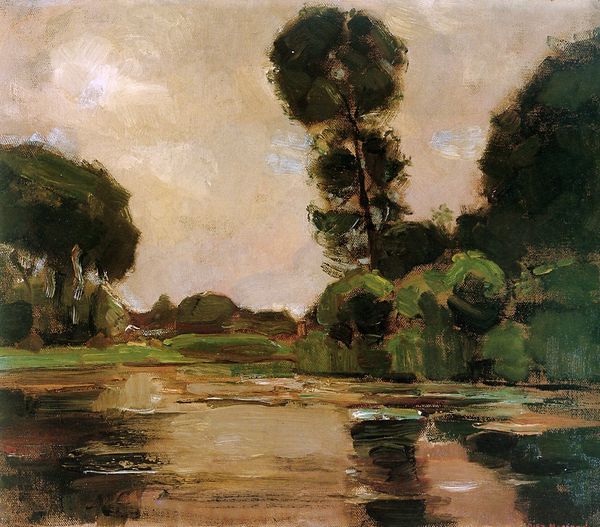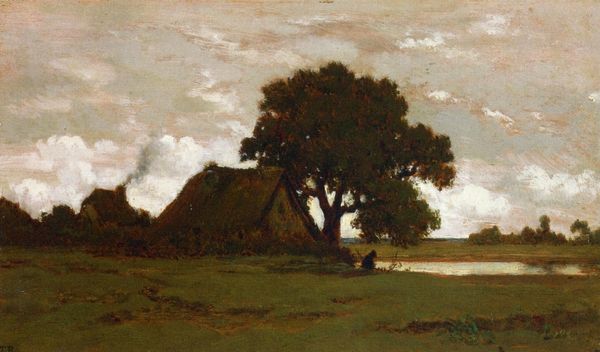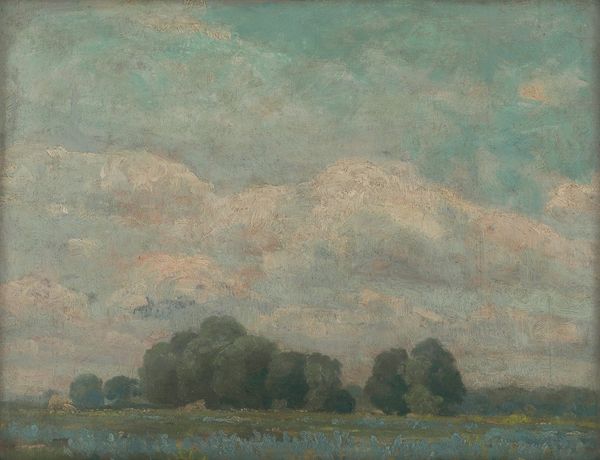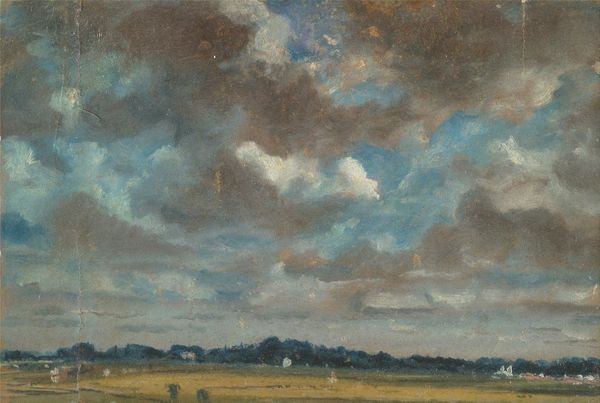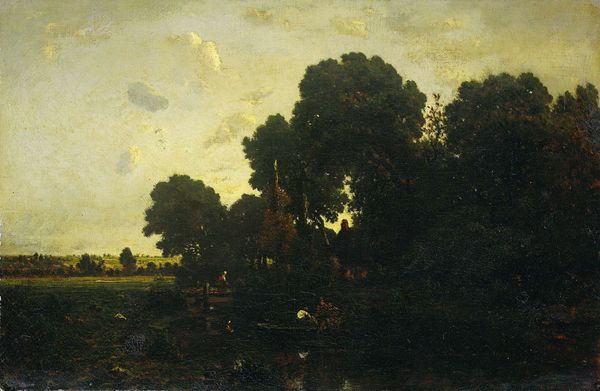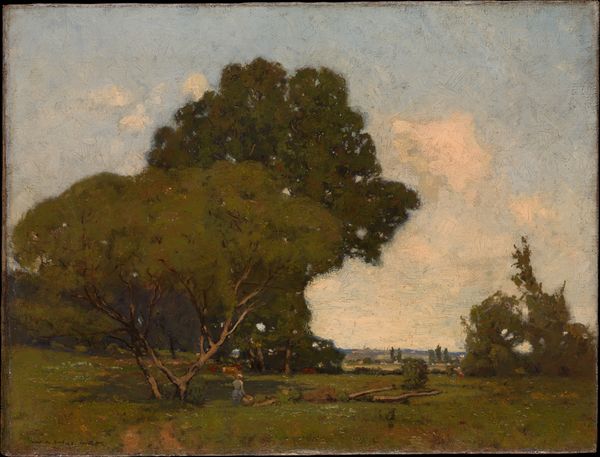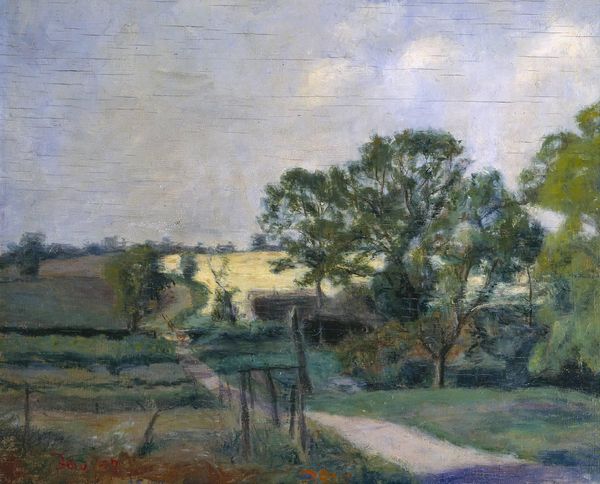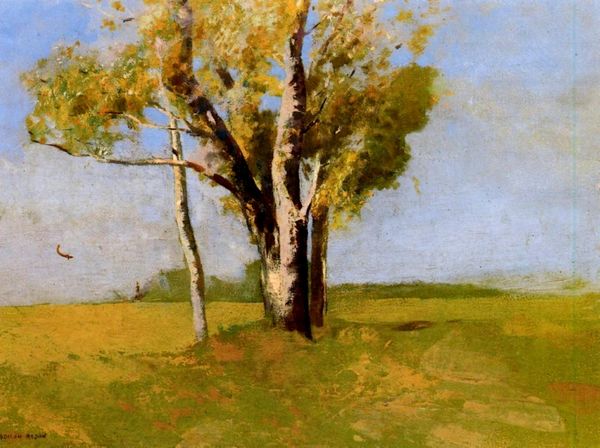
Copyright: Public Domain: Artvee
Adolf Hölzel painted these silver poplar trees with oil on canvas in the late 19th or early 20th century. Trees have long held symbolic weight in the human psyche. These aren't mere botanical studies; they are vessels carrying cultural memory. Recall the tree of knowledge in Eden, or the sacred groves of ancient Greece—places of wisdom and divine presence. The verticality of trees, reaching skyward, often symbolizes the connection between the earthly and the divine. We see this echoed in the "axis mundi," the world axis, depicted in various cultures through trees or poles, linking different realms of existence. The emotional pull of this image lies in its evocation of nature's enduring presence. The image resonates with our own subconscious understanding of the natural world as a source of solace and continuity. Notice how the rhythmic arrangement of the trees creates a sense of harmony, engaging us on a level that transcends mere visual appreciation. The symbolism of trees progresses cyclically, resurfacing in art and myth across time, continually adapting to new cultural landscapes.
Comments
No comments
Be the first to comment and join the conversation on the ultimate creative platform.


